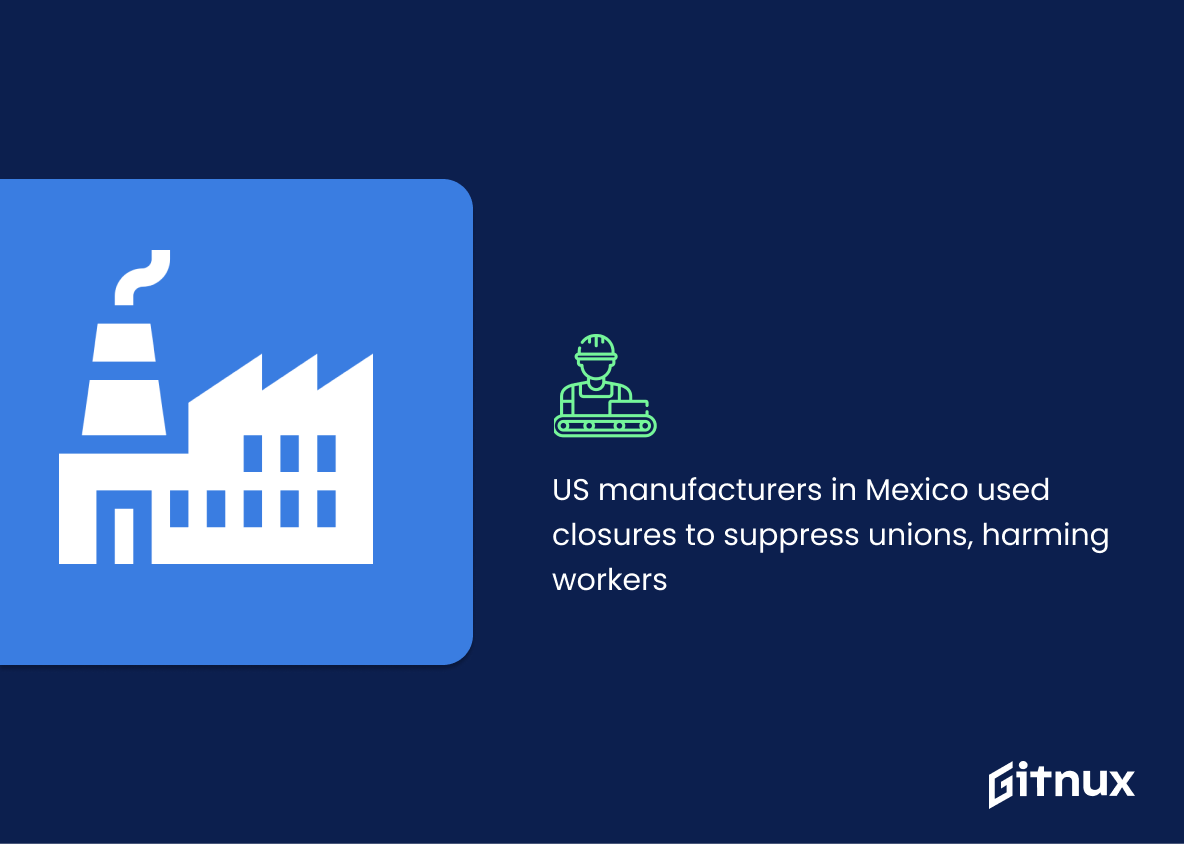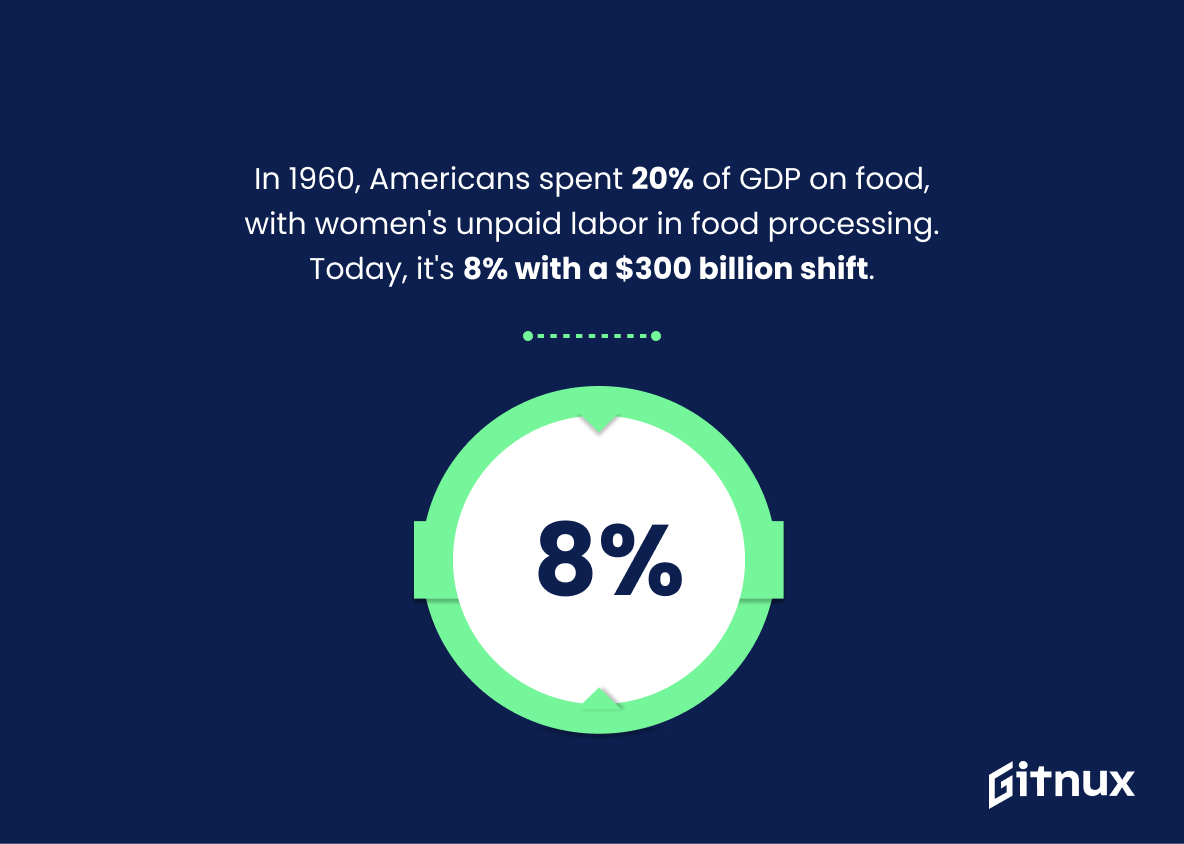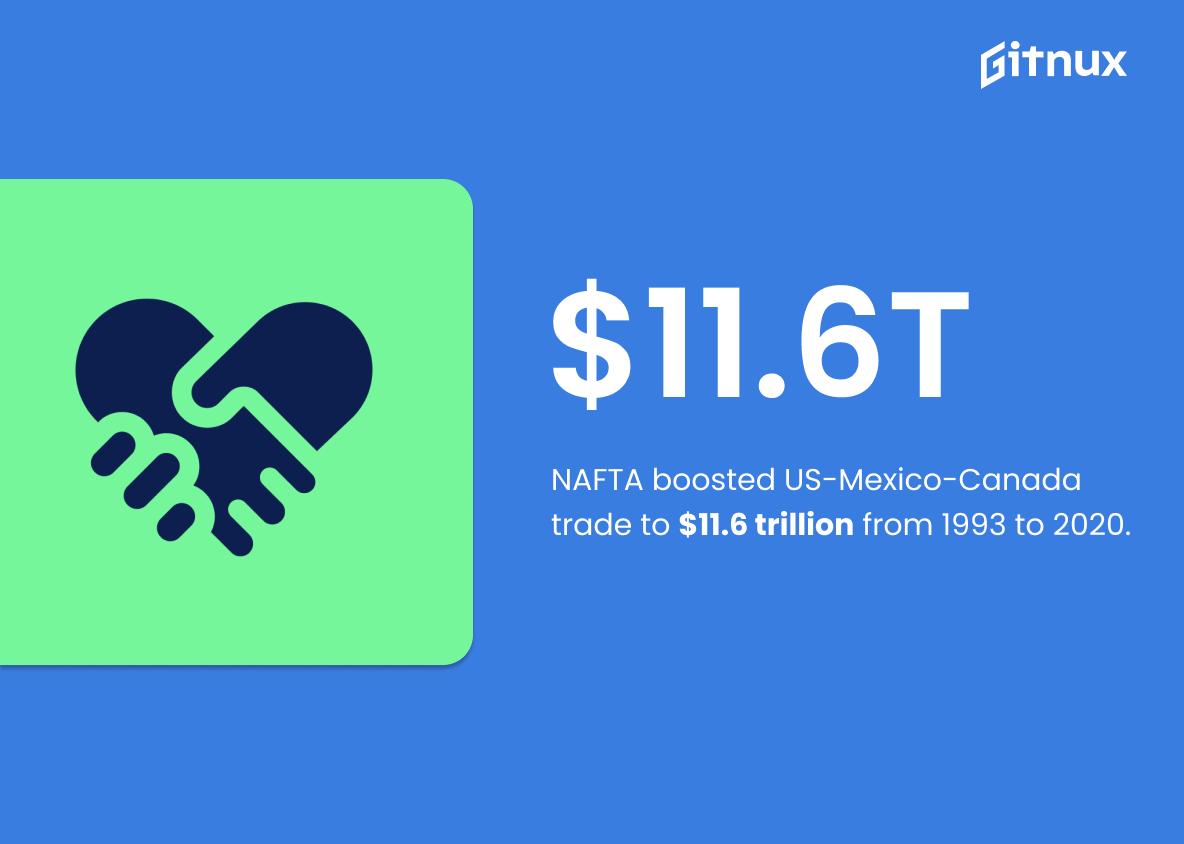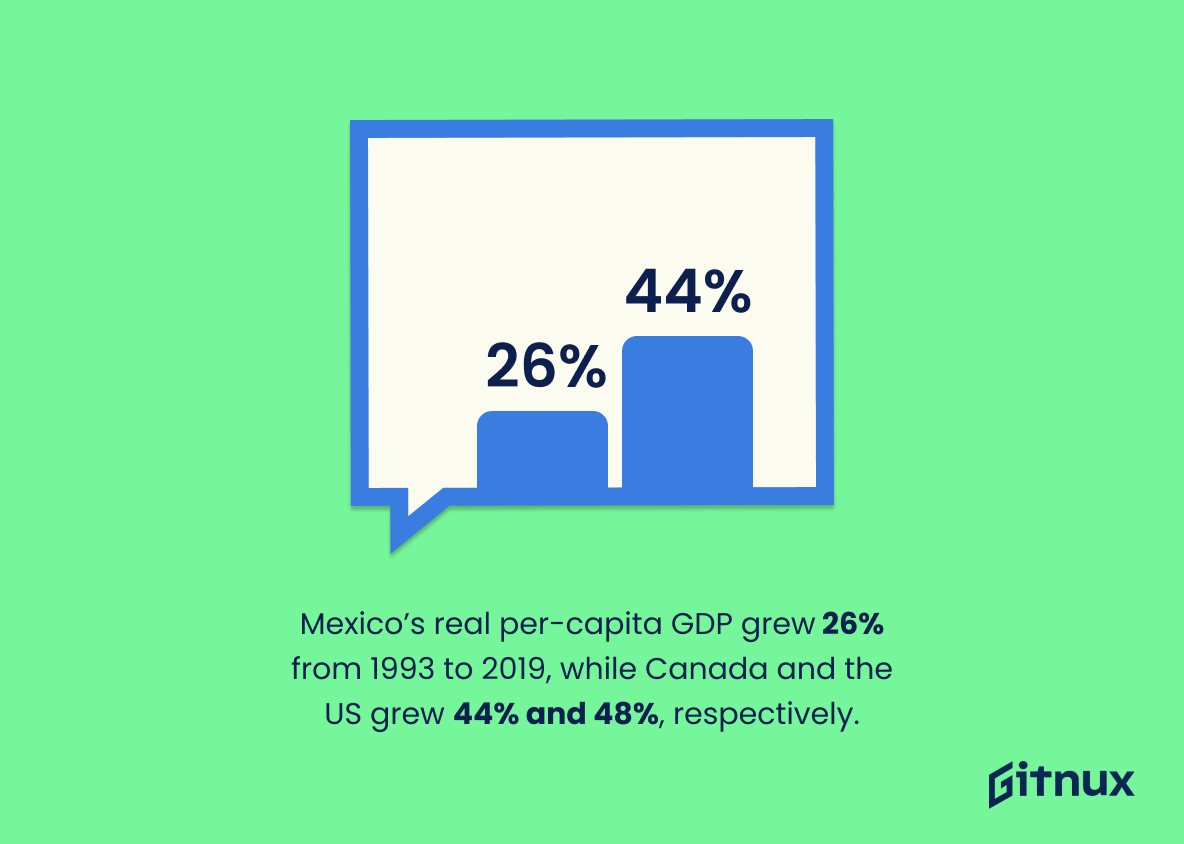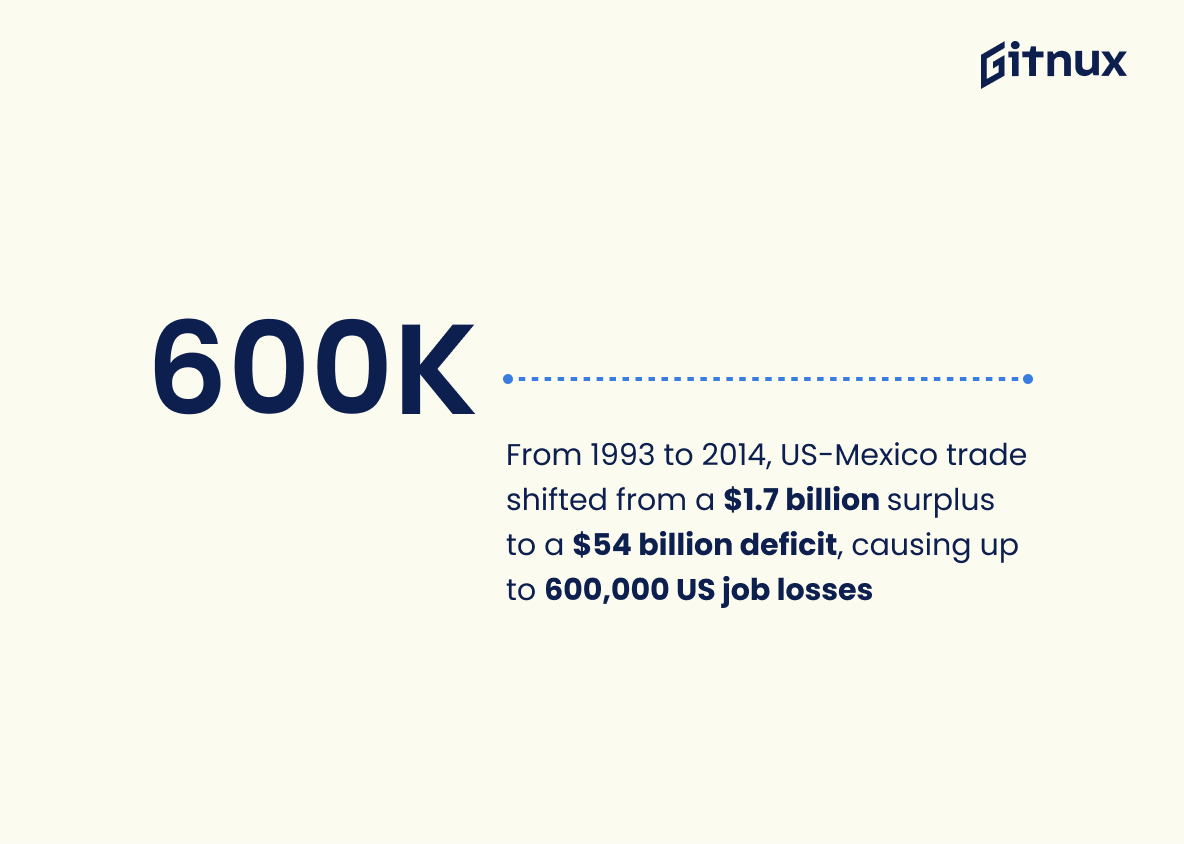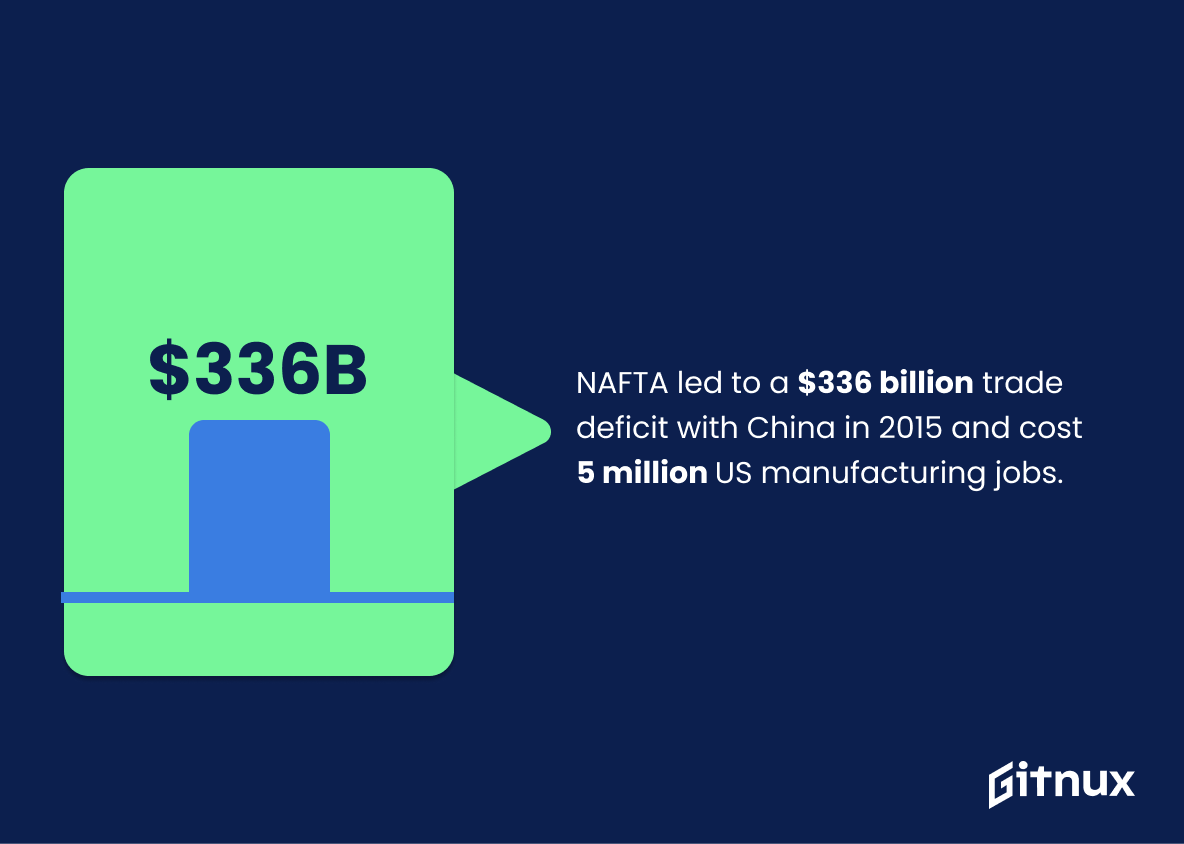The North American Free Trade Agreement (NAFTA) has been a major source of debate since its implementation in 1994. While some argue that it has been beneficial for the economies of the United States, Mexico, and Canada, others point to the job losses that have occurred in each country as a result of the agreement.
In this blog post, we will take a look at the job loss statistics associated with NAFTA and discuss what they mean for the future of the agreement. We will also explore potential solutions to the job losses that have occurred and how they could be used to benefit all three countries.
NAFTA Job Loss: The Most Important Statistics
Manufacturing employment in the US has declined drastically over the past three generations, from 30% of nonfarm jobs in the 1950s to less than 11% today.
Mexico’s real per-capita GDP grew 26% from 1993 to 2019, while Canada and the US grew 44% and 48%, respectively.
NAFTA Job Loss Statistics Overview
64-71% of US manufacturing firms in industries that moved to Mexico used the threat of closing factories to prevent union organizing drives, resulting in suppressed wage growth and weakened bargaining power for workers.
This shows how the threat of job loss has been used to limit workers’ rights and wages, leading to a decrease in job security and wages for workers.
US merchandise exports to Canada and Mexico have increased by 66% over the past five years, providing 39% of all growth in US exports from 2009 to 2014.
This increase in exports is 2.7 times greater than the increase in exports to the four BRIC economies, resulting in lower prices for American families and businesses, stimulating productivity and making raw materials more accessible.
The US Chamber of Commerce study found that trade agreements, including NAFTA, supported 14 million jobs in the US, with 5 million of those jobs supported by the increase in trade generated by NAFTA.
Following the implementation of NAFTA, US manufacturers added over 800,000 jobs. Contrary to popular belief, NAFTA did not lead to a loss of US factory jobs abroad, a rise in the US trade deficit, or an increase in unemployment rates. Instead, it actually supported job growth in the US.
Manufacturing employment in the US has declined drastically over the past three generations, from 30% of nonfarm jobs in the 1950s to less than 11% today.
This decline has major implications for the US economy, as it has caused job losses and economic insecurity for many American workers, particularly in the wake of NAFTA.
Americans now spend 8% of GDP on food compared to 20% in 1960, with over $300 billion of the annual food budget being spent on food processing that was previously unpaid labor by women in 1960.
Thus, the US economy has shifted away from food production and towards other industries, which may have contributed to job losses in the agricultural sector.
NAFTA increased cross-border commerce between the US, Mexico, and Canada, totaling $11.6 trillion from 1993 to 2020.
While NAFTA has increased trade, it has not necessarily had a positive effect on employment in the countries involved. This is because the increased trade has not necessarily resulted in increased job opportunities for workers in the countries involved.
Mexico’s real per-capita GDP grew 26% from 1993 to 2019, while Canada and the US grew 44% and 48%, respectively.
This suggests that Mexico’s economy is not growing fast enough to absorb the job losses that have occurred in the US and Canada due to NAFTA.
From 1993 to 2014, the U.S.-Mexico trade balance shifted from a $1.7 billion U.S. surplus to a $54 billion deficit, resulting in the loss of up to 600,000 U.S. jobs.
It shows that the U.S. has experienced a significant trade deficit with Mexico since the implementation of NAFTA, which has resulted in a significant loss of jobs in the U.S. economy.
Since the signing of NAFTA, US spending on Chinese goods has increased significantly, resulting in a trade deficit of $336 billion in 2015 and a decrease of 5 million US manufacturing jobs.
Conclusion
In conclusion, the statistics on job loss due to NAFTA are alarming. While the trade agreement has had some positive impacts, it has also had a negative effect on the job market in the United States. It is necessary to analyze the effects of trade agreements on employment when making decisions about trade policy.
In addition, it is important to consider the potential for job loss when negotiating trade agreements. The data on job loss due to NAFTA should be taken seriously and used to inform policy decisions.
References
1 – https://www.thebalancemoney.com/disadvantages-of-nafta-3306273
2 – https://www.uschamber.com/assets/archived/images/the_facts_on_nafta_-_2017.pdf
3 – https://www.vox.com/the-big-idea/2017/1/24/14363148/trade-deals-nafta-wto-china-job-loss-trump
4 – https://www.investopedia.com/articles/economics/08/north-american-free-trade-agreement.asp
5 – https://knowledge.wharton.upenn.edu/article/naftas-impact-u-s-economy-facts/
